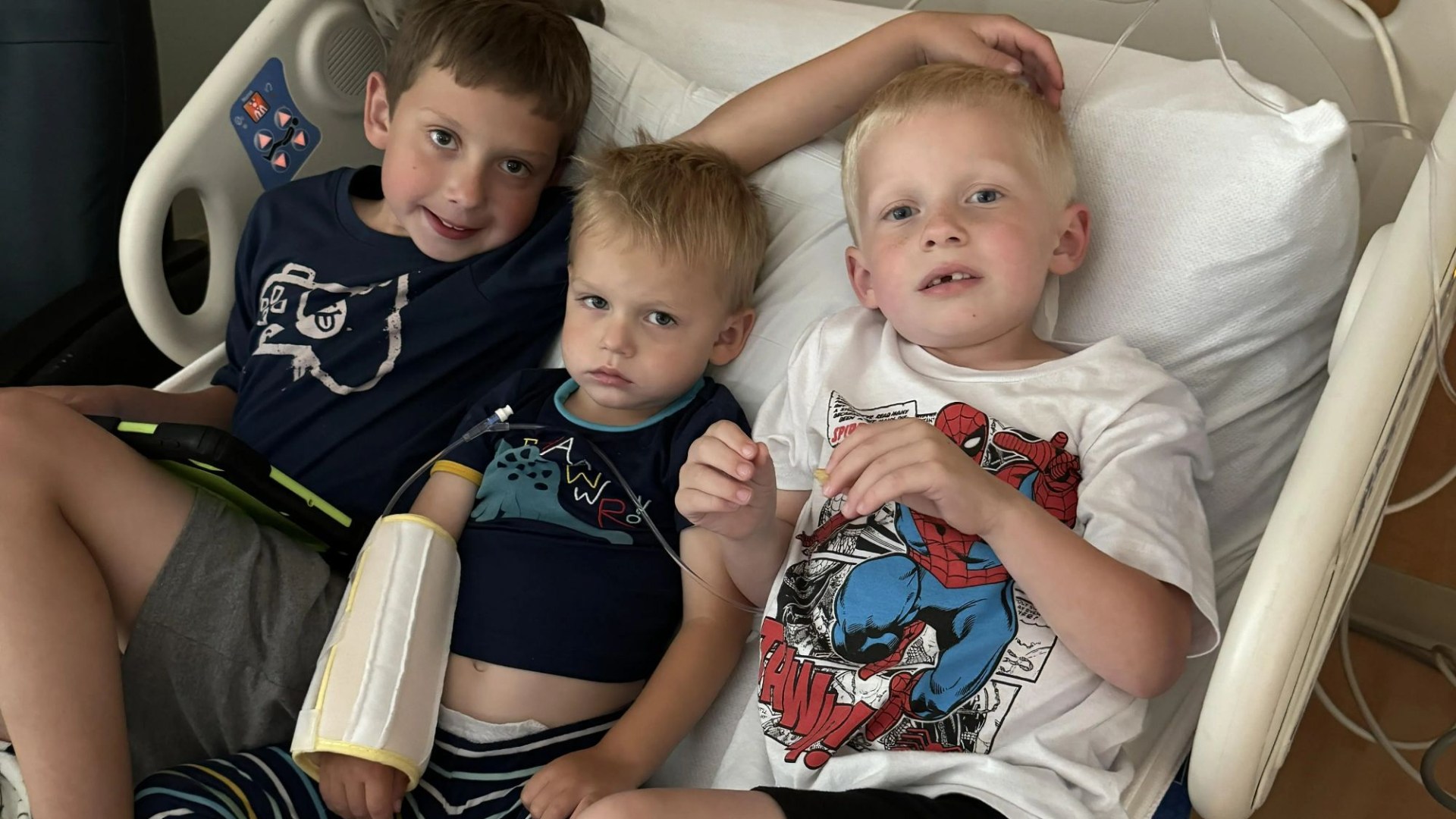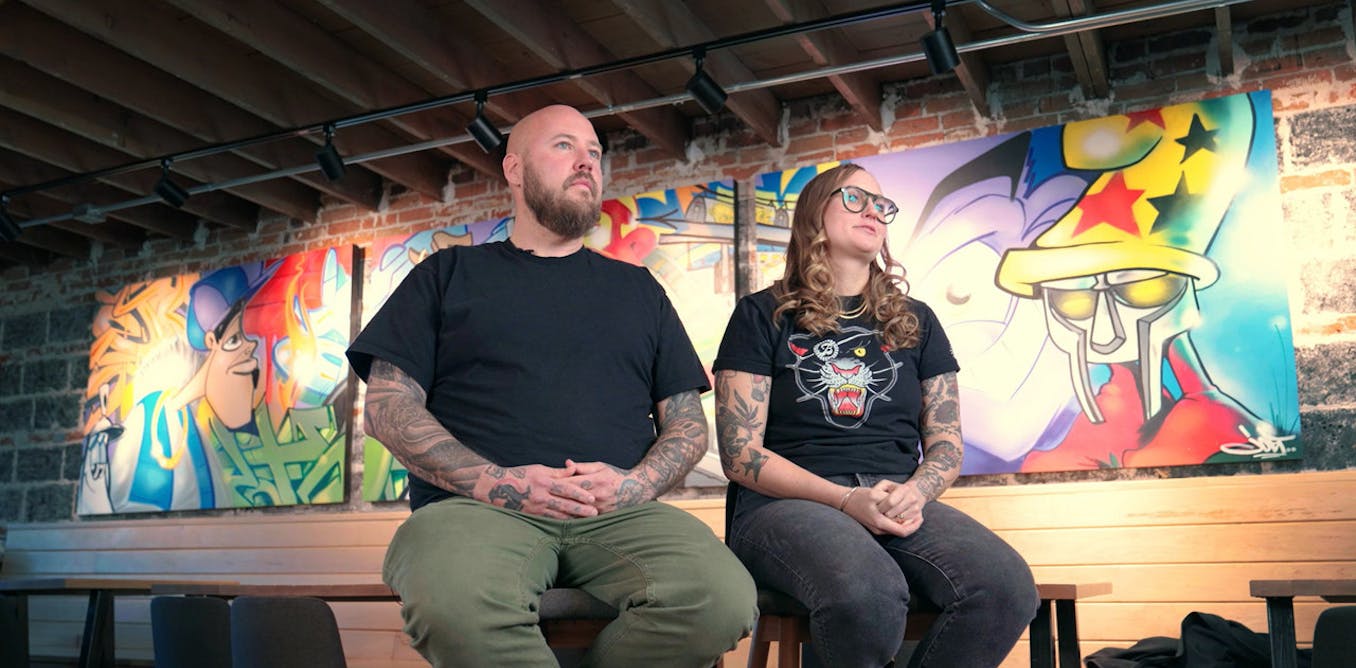A MUM has shared her shock after her three little boys were diagnosed with the same rare brain condition.
Whitney Niece took sons Lincoln, 10, Norrin, six, and Remley, three, to the doctor after they started suffering from bizarre symptoms one-by-one.
8

8

8

8
They were struck with headaches and vomiting, as well as a loss of balance and coordination.
At first, doctors dismissed their symptoms as being caused by a virus.
But the three youngsters were found to have Chiari malformation type 1 – a condition which occurs when the lower part of the brain pushes down into the spinal canal, triggering worrying symptoms.
“Our lives felt like a whirlwind – it seemed like one challenge after another hit our family,” their 38-year-old mum, a marketing coordinator from Indiana, US, said.
Read more on rare conditions
“I felt defeated before we had answers.
“It was always chalked up to being a viral issue, yet no one else was sick.
“So finding the cause for their problems was a strange feeling.
“I felt relief but then also nervousness because I had no idea [of] anything about the condition.
“Remley’s diagnosis was unexpected, as all prenatal tests failed to detect it.
“Then, Lincoln’s diagnosis was another shock, leaving me to wonder about the odds of having two children with the same condition.
“I suspected Norrin might have it too based on his symptoms, but that didn’t lessen the impact of discovering that all three of our boys shared the same diagnosis.”
The boys’ symptoms had presented slightly differently and at different ages.
Whitney said: “Lincoln and Norrin’s were mainly headaches and vomiting, while Remley had the loss of coordination – he would walk and just fall, typically face first since he was so little.”
Little Remley was first diagnosed in June 2022 after he stopped urinating, and an MRI found the malformation incidentally.
Lincoln was again diagnosed by chance, after a doctor spotted his pupils were not the same size and called for tests in February 2023.
Finally, Norrin was diagnosed in December 2023 after battling headaches for three months.

8

8

8

8
The malformations are generally caused by genetic mutations that take shape while babies develop in the womb.
While not life-threatening, the diagnoses still came as a shock to the parents – and have led to a string of hospital stays, including decompression surgeries to help ease the symptoms.
The procedure involves removing a small piece of bone from the base of the skull or top of the spine to reduce the pressure on the brain and allow the fluid in and around the brain and spinal cord to flow normally.
Whitney said: “In March 2023, Lincoln underwent a decompression surgery and fortunately was out of the hospital within three days.
“Around the same time, Remley began to show more symptoms, prompting his neurosurgeon to request further imaging to determine if he also needed surgery.
“He was decompressed that August but developed a cerebrospinal fluid leak just 10 days later.
“He required emergency surgery to insert an external ventricular drain, which he had for 10 days until a ventriculoperitoneal shunt was placed at the end of the month.”
This is a thin plastic tube that helps drain extra cerebrospinal fluid from the brain.
The mum went on: “Meanwhile, Norrin began complaining of frequent headaches, and we started the testing process for him.
“In January, he was also decompressed, facing the same CSF fluid leak, EVD drain, and shunt that Remley had experienced months earlier.”
What is a Chiari malformation?
A Chiari malformation is where the lower part of the brain pushes down into the spinal canal.
There are four main types, but type 1, called Chiari I, is the most common.
In someone with Chiari I, the lowest part of the back of the brain extends into the spinal canal.
This can put pressure on the brainstem and spinal cord, and obstruct the flow of fluid.
The severity of Chiari malformations can vary from person to person, but generally:
- Chiari I malformations are not considered life-threatening
- Some people experience painful headaches, movement problems and other unpleasant symptoms but many people will not have any symptoms
- There’s a chance of developing syringomyelia (where a fluid-filled cavity called a syrinx develops in the spinal cord), which can damage the spinal cord if not treated promptly
- Surgery can usually stop the symptoms getting worse and can sometimes improve them, although some problems may remain
Many people with a Chiari I malformation will not have any symptoms.
Sometimes they’re only found after an MRI scan of the brain is carried out for another reason.
If symptoms do develop, they can include:
- Headaches – these are usually felt at the back of the head and may be brought on or made worse by coughing, straining, sneezing or bending over
- Neck pain
- Dizziness and balance problems
- Muscle weakness
- Numbness or tingling in the arms or legs
- Blurred vision, double vision and sensitivity to light
- Swallowing problems
- Hearing loss and tinnitus
- Feeling and being sick
- Insomnia and clinical depression
Treatment will depend on how severe the symptoms are.
Painkillers can help relieve any headaches and neck pain.
But if your headaches are severe or you have problems caused by the pressure on your spinal cord – such as movement difficulties – surgery may be recommended.
Source: NHS
Whitney says the health issue has been difficult for her and husband Ron, 41, to navigate – but that things have started to calm down.
She said: “Financially, we felt overwhelmed, trying to juggle caring for our kids, managing jobs, and caring for the other two who were not in the hospital.
“Thankfully, life has settled down significantly since then.
“While we still deal with headaches weekly, they are now manageable with medication at home.
“Lincoln was cleared by his neurosurgeon and is no longer under neurosurgical care.
“Norrin and Remley will have annual check-ups for their VP shunts, but their futures look bright – and hopefully healthy!”




